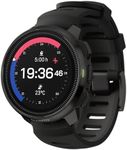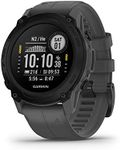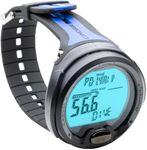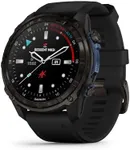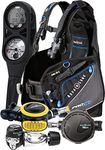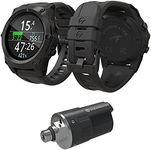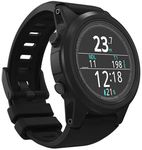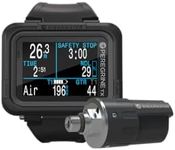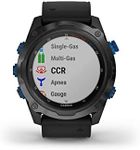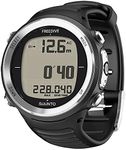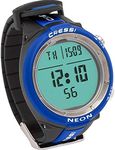Buying Guide for the Best Scuba Diving Computers
Choosing the right scuba diving computer is crucial for ensuring your safety and enhancing your diving experience. A diving computer helps you monitor your depth, time, and decompression status, making it an essential piece of equipment for any diver. When selecting a diving computer, consider your diving experience, the type of diving you plan to do, and the features that will best support your needs. Here are some key specifications to consider when choosing a scuba diving computer.Display TypeThe display type of a diving computer can be either LCD, LED, or OLED. This spec is important because it affects how easily you can read the information underwater. LCD displays are common and generally more affordable, but they may be harder to read in low light conditions. LED displays are brighter and easier to read, but they can consume more battery power. OLED displays offer the best visibility with vibrant colors and high contrast, making them ideal for deep or night dives. Choose a display type that suits your diving environment and personal preference for readability.
Air IntegrationAir integration allows your diving computer to monitor your tank pressure and calculate your remaining air time. This feature is important for managing your air supply and ensuring you have enough air for a safe ascent. There are two types of air integration: hose-integrated and wireless. Hose-integrated systems are connected directly to your regulator, while wireless systems use a transmitter attached to your tank. If you want real-time air monitoring and a more streamlined setup, consider a diving computer with wireless air integration.
AlgorithmThe algorithm used by a diving computer determines how it calculates decompression limits and no-decompression times. This spec is crucial for your safety, as it affects how conservatively or aggressively the computer manages your dive profile. Common algorithms include Bühlmann, RGBM, and VPM. Bühlmann algorithms are widely used and offer a good balance between safety and dive time. RGBM and VPM algorithms are more conservative, providing additional safety margins. Choose an algorithm that matches your diving style and risk tolerance.
Battery TypeThe battery type of a diving computer can be either user-replaceable or rechargeable. This spec is important for convenience and long-term use. User-replaceable batteries allow you to quickly swap out batteries on the go, which is useful for extended trips. Rechargeable batteries are more environmentally friendly and can be charged between dives, but they may require access to a power source. Consider your diving habits and how often you dive when choosing the battery type that best suits your needs.
Size and WeightThe size and weight of a diving computer affect its comfort and portability. This spec is important because a bulky or heavy computer can be cumbersome to wear, especially on long dives. Smaller, lightweight models are more comfortable and less obtrusive, making them ideal for travel and frequent use. However, larger models may offer bigger displays and more features. Consider your comfort and how you plan to use the computer when deciding on the size and weight that works best for you.
ConnectivityConnectivity features, such as Bluetooth or USB, allow you to transfer dive data to your computer or smartphone. This spec is important for logging and analyzing your dives, as well as sharing your experiences with others. Bluetooth connectivity offers wireless convenience, while USB connections provide reliable data transfer. If you enjoy tracking your dive history and sharing your adventures, look for a diving computer with robust connectivity options.
User InterfaceThe user interface of a diving computer includes the buttons, menus, and overall ease of use. This spec is important because a complicated interface can be frustrating and distracting underwater. Simple, intuitive interfaces with easy-to-navigate menus and clear instructions are ideal, especially for beginners. More advanced divers may prefer computers with customizable settings and additional features. Choose a user interface that matches your experience level and comfort with technology.

